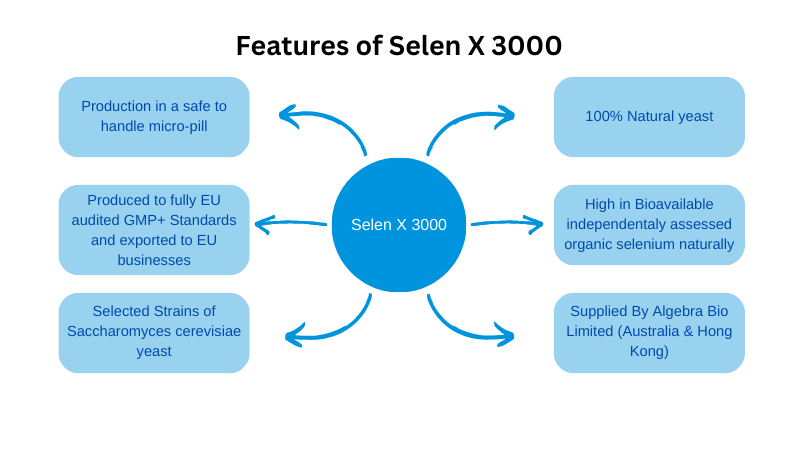Organic Selenium
Organic Selenium
ISelenium was believed to be toxic to animals, however, in 1957, selenium was reported as a dietary vital nutrient. Selenium is available in inorganic and organic forms. In 1974, the Food and Drug Administration (FDA) regulated the supplementation of selenium in poultry diets. In 1994, the National Research Council recognized selenium as a dietary essential nutrient for laying hens. The maximum allowed selenium addition level is 0.30 mg/kg. One of the most common supplements used is sodium selenite (SS), the inorganic selenium source. However, in 2000, the FDA approved the use of the organic source of selenium, Se-enriched yeast (SY) in poultry diets. Selenium has valuable effects on animal immune status, growth parameters, production and reproduction. Experimentally, it has been indicated that SY benefits more than SS due its more bioavailability. Selenium inclusion in food-animal diets has an extra nutritional advantage to human consumers of Se enriched food-animal products.
SELEN X™ 3000
SELEN X 3000 is a pure, high-potency selenium yeast that has been made entirely from natural ingredients under strict GMP+ guidelines.
In production SELEN X 3000 the selenium is incorporated into selenium compounds: seleno-methionine, methyl-selenocysteine, seleno-cysteine and numerous other organic selenium species. Thus, creating a product with best absorption and retention, and effective antioxidant impacts providing chemo preventive and immunomodulating support.
A yeast containing organic selenium is more readily absorbed and assimilated than an inorganic selenium compound like sodium selenite, and can be stored in tissues for later use as needed.

Benefits OF SELEN X 3000
- A significant improvement in reproductive efficiency.
- Increases the productivity of animals by improving their liveweight gain and feed efficiency.
- Improved immune function and antioxidant status in the animal.
- Enhances the quality of livestock products (eggs, meat, milk).
- It synergizes with vitamin E in the metabolism (with a reduced dosage of vitamin E).
SELEN X™ 3000
| Species | Dosage |
|---|---|
| Poultry Breeder, Broiler & layer | 100 grams per MT feed |
| Ruminants | 100 grams per MT feed |
| Se-rich milk | 250 grams per MT feed |
| Aqua | 100 grams per MT feed |
| Swine | 100 grams per MT feed |
